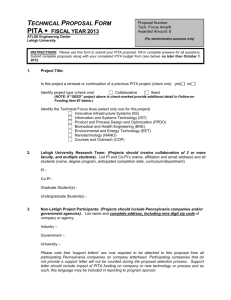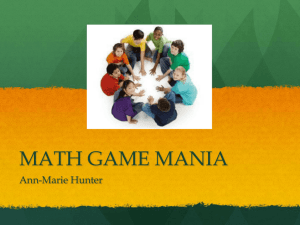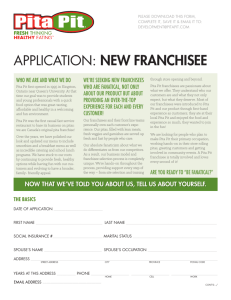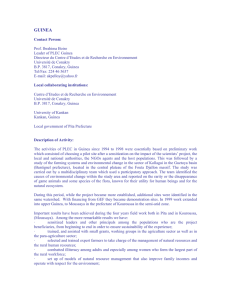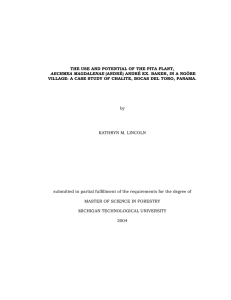Though housed in the computer science department, the PiTA board... and Discovery Collaboratory have many far reaching social implications. Conceptualized...
advertisement
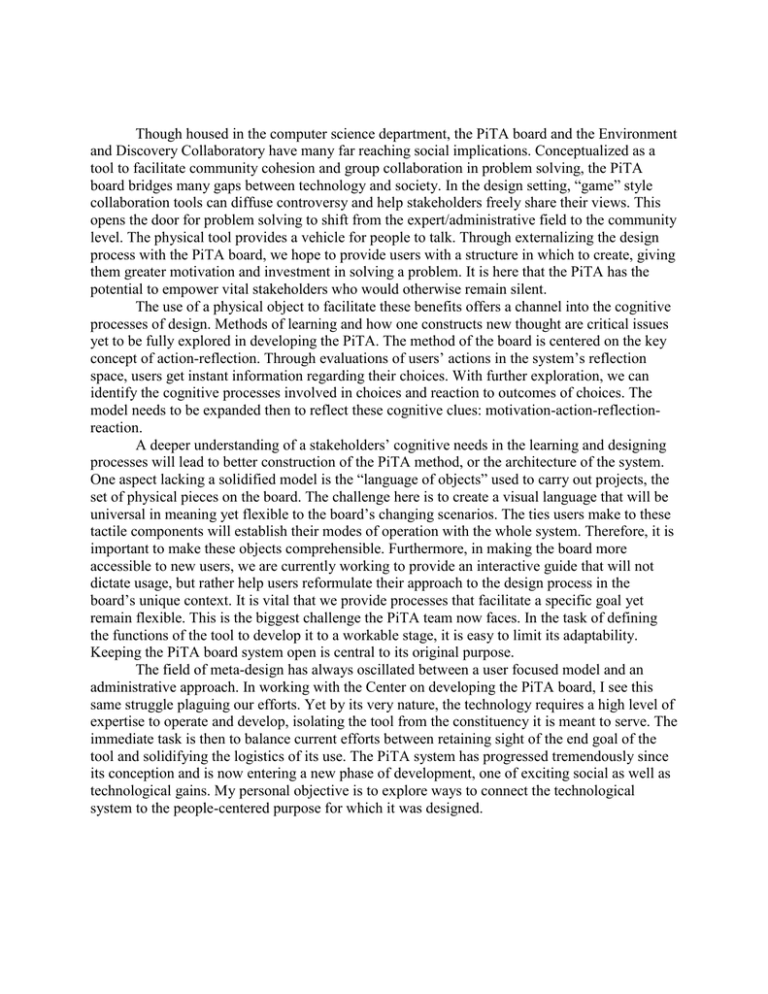
Though housed in the computer science department, the PiTA board and the Environment and Discovery Collaboratory have many far reaching social implications. Conceptualized as a tool to facilitate community cohesion and group collaboration in problem solving, the PiTA board bridges many gaps between technology and society. In the design setting, “game” style collaboration tools can diffuse controversy and help stakeholders freely share their views. This opens the door for problem solving to shift from the expert/administrative field to the community level. The physical tool provides a vehicle for people to talk. Through externalizing the design process with the PiTA board, we hope to provide users with a structure in which to create, giving them greater motivation and investment in solving a problem. It is here that the PiTA has the potential to empower vital stakeholders who would otherwise remain silent. The use of a physical object to facilitate these benefits offers a channel into the cognitive processes of design. Methods of learning and how one constructs new thought are critical issues yet to be fully explored in developing the PiTA. The method of the board is centered on the key concept of action-reflection. Through evaluations of users’ actions in the system’s reflection space, users get instant information regarding their choices. With further exploration, we can identify the cognitive processes involved in choices and reaction to outcomes of choices. The model needs to be expanded then to reflect these cognitive clues: motivation-action-reflectionreaction. A deeper understanding of a stakeholders’ cognitive needs in the learning and designing processes will lead to better construction of the PiTA method, or the architecture of the system. One aspect lacking a solidified model is the “language of objects” used to carry out projects, the set of physical pieces on the board. The challenge here is to create a visual language that will be universal in meaning yet flexible to the board’s changing scenarios. The ties users make to these tactile components will establish their modes of operation with the whole system. Therefore, it is important to make these objects comprehensible. Furthermore, in making the board more accessible to new users, we are currently working to provide an interactive guide that will not dictate usage, but rather help users reformulate their approach to the design process in the board’s unique context. It is vital that we provide processes that facilitate a specific goal yet remain flexible. This is the biggest challenge the PiTA team now faces. In the task of defining the functions of the tool to develop it to a workable stage, it is easy to limit its adaptability. Keeping the PiTA board system open is central to its original purpose. The field of meta-design has always oscillated between a user focused model and an administrative approach. In working with the Center on developing the PiTA board, I see this same struggle plaguing our efforts. Yet by its very nature, the technology requires a high level of expertise to operate and develop, isolating the tool from the constituency it is meant to serve. The immediate task is then to balance current efforts between retaining sight of the end goal of the tool and solidifying the logistics of its use. The PiTA system has progressed tremendously since its conception and is now entering a new phase of development, one of exciting social as well as technological gains. My personal objective is to explore ways to connect the technological system to the people-centered purpose for which it was designed.
